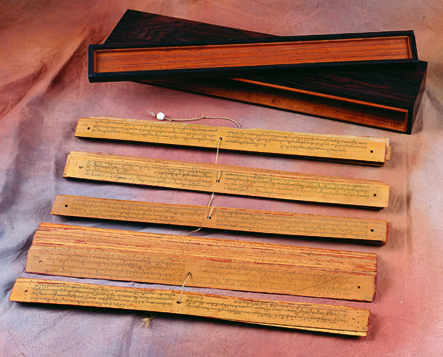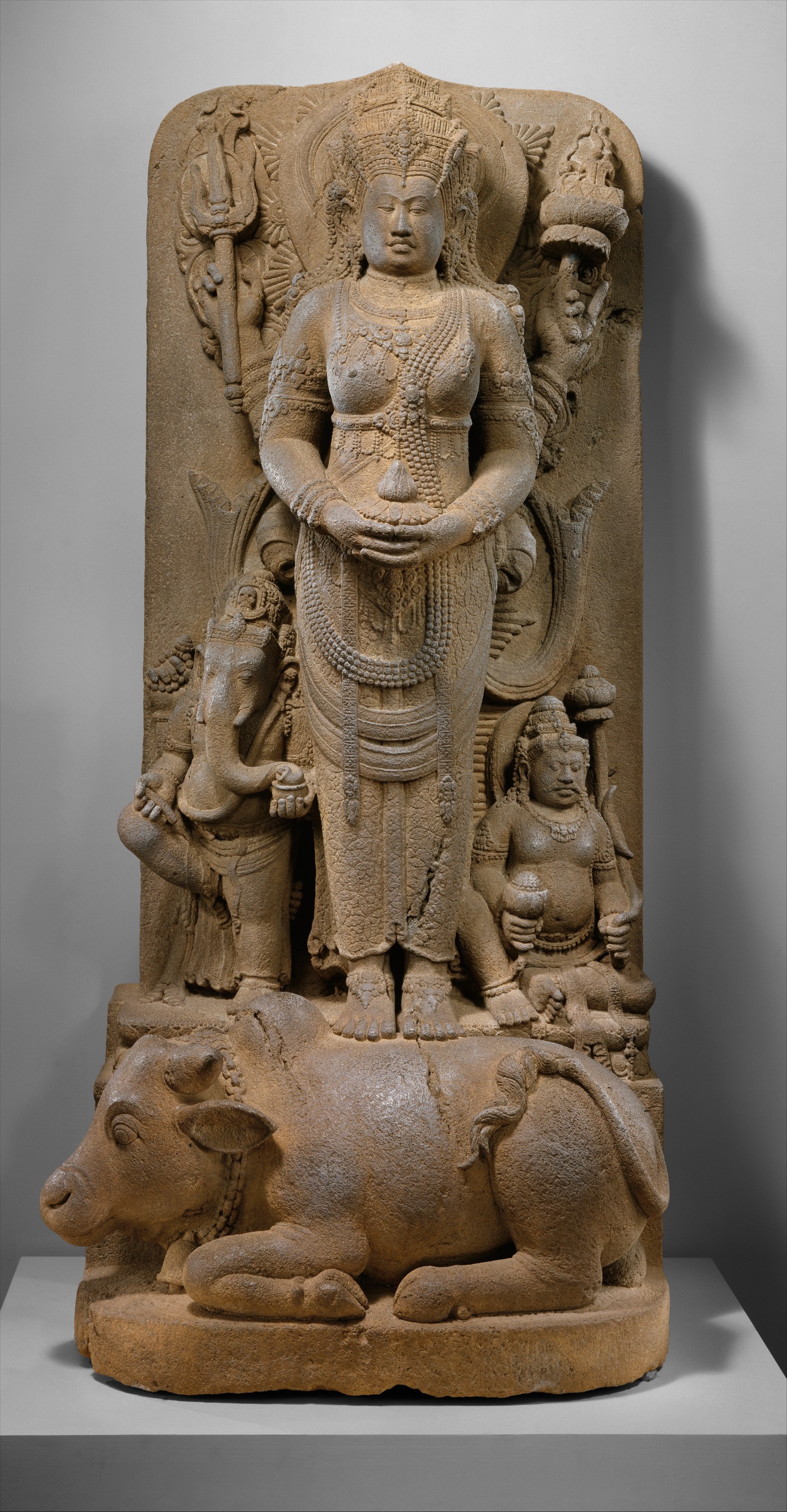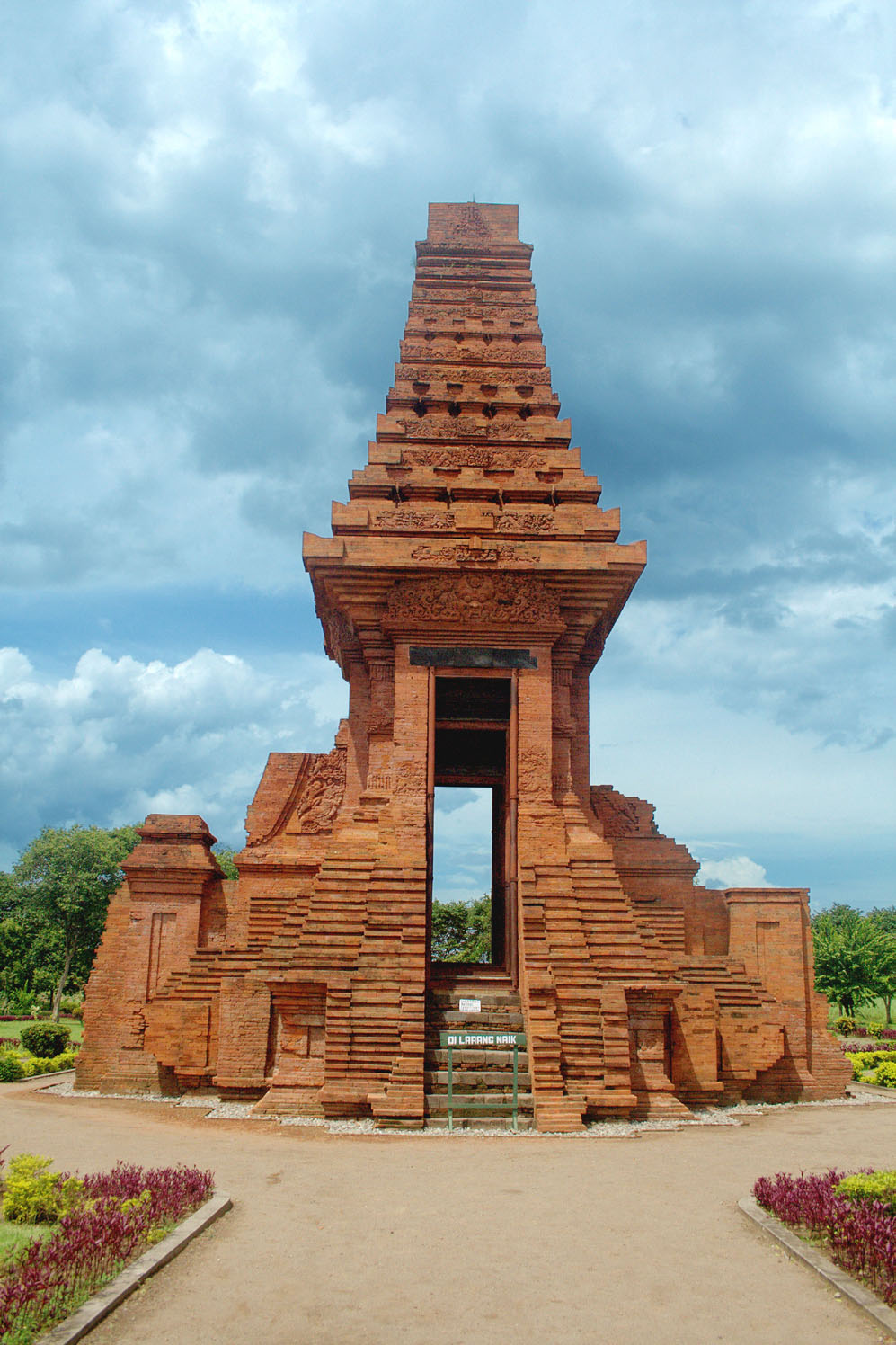|
Majapahit
Majapahit ( jv, ꦩꦗꦥꦲꦶꦠ꧀; ), also known as Wilwatikta ( jv, ꦮꦶꦭ꧀ꦮꦠꦶꦏ꧀ꦠ; ), was a Javanese Hindu-Buddhist thalassocratic empire in Southeast Asia that was based on the island of Java (in modern-day Indonesia). It existed from 1293 to circa 1527 and reached its peak of glory during the era of Hayam Wuruk, whose reign from 1350 to 1389 was marked by conquests that extended throughout Southeast Asia. His achievement is also credited to his prime minister, Gajah Mada. According to the () written in 1365, Majapahit was an empire of 98 tributaries, stretching from Sumatra to New Guinea; consisting of present-day Indonesia, Singapore, Malaysia, Brunei, southern Thailand, Timor Leste, southwestern Philippines (in particular the Sulu Archipelago) although the scope of Majapahit sphere of influence is still the subject of debate among historians. The nature of Majapahit relations and influences upon its overseas vassals, and also its status as an empi ... [...More Info...] [...Related Items...] OR: [Wikipedia] [Google] [Baidu] |
Trowulan
Trowulan is an archaeological site in Trowulan Subdistrict, Mojokerto Regency, in the Indonesian province of East Java. It includes approximately 100 square kilometres and has been theorized to be the site of the eponymous capital city of the Majapahit Empire, which is described by Mpu Prapanca in the 14th-century poem Nagarakretagama and in a 15th-century Chinese source. When it was the capital of the Majapahit Empire, the city was known as Wilwatikta, which is a name also synonymous with the empire's name. It was razed during the invasion of Girindrawardhana to defeat Kertabhumi in 1478. After this event Majapahit's capital was moved to Daha ( Kediri). The Trowulan Museum includes a collection of artifacts. The Nagarakretagama contains poetic descriptions of the palace of Majapahit and its surroundings but is limited to the royal and religious sectors. Some of the details are vague, and scholars who have tried to compile a plan of the capital have come to different conclusion ... [...More Info...] [...Related Items...] OR: [Wikipedia] [Google] [Baidu] |
Demak Sultanate
The Demak Sultanate (کسلطانن دمق) was a Javanese Muslim state located on Java's north coast in Indonesia, at the site of the present-day city of Demak. A port fief to the Hindu-Buddhist Majapahit kingdom thought to have been founded in the last quarter of the 15th century, it was influenced by Islam brought by Muslim traders from China, Gujarat, Arabia and also Islamic kingdoms in the region, such as Samudra Pasai, Malacca and Bani (Muslim) Champa. The sultanate was the first Muslim state in Java, and once dominated most of the northern coast of Java and southern Sumatra. Although it lasted only a little more than a century, the sultanate played an important role in the establishment of Islam in Indonesia, especially on Java and neighboring areas. Etymology The origin of Demak was the settlement named Glagah Wangi. According to tradition, the first person that Raden Patah encountered in Glagah Wangi was a woman named Nyai Lembah, from Rawa Pening. Nyai Lembah ... [...More Info...] [...Related Items...] OR: [Wikipedia] [Google] [Baidu] |
Nagarakretagama
The ''Nagarakretagama'' or ''Nagarakṛtāgama'', also known as ''Desawarnana'' or ''Deśavarṇana'', is an Old Javanese eulogy to Hayam Wuruk, a Javanese king of the Majapahit Empire. It was written on lontar as a '' kakawin'' by Mpu Prapanca in 1365 (1287 Saka year). The ''Nagarakretagama'' contains detailed descriptions of the Majapahit Empire during its greatest extent. The poem affirms the importance of Hindu–Buddhism in the Majapahit empire by describing temples and palaces and several ceremonial observances. The manuscript In 1894, the Dutch East Indies launched a military expedition against the Cakranegara royal house of Lombok. That year, the Dutch took the manuscript as part of the valuable '' Lombok treasure'', war-booty from the destroyed palace of Mataram-Cakranagara in Lombok. The first western scholar to study the manuscript was , a Dutch philologist. He accompanied the KNIL expedition to Lombok in 1894, and is credited with saving the valuable ma ... [...More Info...] [...Related Items...] OR: [Wikipedia] [Google] [Baidu] |
Surya Majapahit
Surya Majapahit (Kawi: ꦯꦸꦂꦪꦩꦗꦥꦲꦶꦠ꧀, Sanskrit: मजपहितस्य सूर्य) (Surya of the Majapahit) is the emblem commonly found in ruins dated from the Majapahit era. The emblem commonly took the form of an eight-pointed sun ray with the rounded part in the center depicting Hindu deities. The emblem might have taken the form of a cosmological diagram haloed by typical sun rays, or a simple circle with typical sun rays. Because of the popularity of the Surya emblem during the Majapahit era, it has been suggested that may have served as the imperial symbol of the Majapahit empire. Hindu deities The most common depiction of Surya Majapahit consists of the images of nine deities and eight sun rays. The round center of the sun depicting nine Hindu Gods called '' Dewata Nawa Sanga''. The major gods in the center is arranged in eight cardinal points around Shiva in the center. The arrangements are: *Center: Shiva *East: Isvara *West: Mahadev ... [...More Info...] [...Related Items...] OR: [Wikipedia] [Google] [Baidu] |
Hayam Wuruk
Hayam Wuruk (Sanskrit: हयम् वुरुक्, Kawi: ꦲꦪꦩ꧀ꦮꦸꦫꦸꦏ꧀) (1334–1389), also called Rajasanagara, Pa-ta-na-pa-na-wu, or Bhatara Prabhu after 1350, was a Javanese Hindu emperor from the Rajasa Dynasty and the 4th emperor of the Majapahit Empire. Together with his prime minister Gajah Mada, he reigned the empire at the time of its greatest power. During his reign, the Hindu epics, the Ramayana and the Mahabharata, became ingrained in the culture and worldview of the Javanese through the '' wayang kulit'' (leather puppets).Mark Juergensmeyer and Wade Clark Roof, 2012Encyclopedia of Global Religion Volume 1, Page 557. He was preceded by Tribhuwana Wijayatunggadewi, and succeeded by his son-in-law Wikramawardhana. Most of the accounts of his life were taken from the ''Nagarakretagama'', a eulogy to Hayam Wuruk, and the ''Pararaton'' ("Book of Kings"), a Javanese historical chronicle. Early life According to the ''Nagarakretagama'', Canto ... [...More Info...] [...Related Items...] OR: [Wikipedia] [Google] [Baidu] |
Flag Of Majapahit
The Majapahit flag and emblem refers to the royal colors and symbols used to represent the Majapahit empire. However, the nature of how the colors and the symbols were used and represented is still a subject of study and disagreement among historians. The red-and-white color combination is flown by the Indonesian Navy in the Republic of Indonesia Ship ( KRI) as naval jack and pennon, with the name "Lencana Perang" and "Ular-Ular Perang" respectively. History The red and white banner is recorded in the Kudadu inscription dated 1294 AD. In the inscription it is said that the red and white banners were flown by Jayakatwang troops from Daha who were chasing Raden Wijaya's troops. The Red and White Charter is another name for the Kudadu inscription. It was stated that Raden Wijaya was being chased by Jayakatwang's troops carrying the flag, when suddenly "the enemy's banner was seen east of Haniruh, the colors were red and white" (''hana ta tuṅgulniṁ atru layū-layū katon·vetan ... [...More Info...] [...Related Items...] OR: [Wikipedia] [Google] [Baidu] |
Raden Wijaya
Raden Wijaya or Raden Vijaya (also known as Nararya Sangramawijaya, regnal name Kertarajasa Jayawardhana) (reigned 1293–1309) was a Javanese emperor, and the founder and first monarch of the Majapahit Empire.Slamet Muljana, 2005, ''Runtuhnya Kerajaan Hindu-Jawa dan Timbulnya Negara-negara Islam di Nusantara'', Yogyakarta: LKiS, . The history of his founding of Majapahit was written in several records, including Pararaton and Negarakertagama. His rule was marked by the victory against the army and the Mongol navy of Kublai Khan's Yuan dynasty. Ancestry There are several versions of his ancestry. According to Pararaton, Raden Wijaya was the son of Mahisa Campaka, prince of Singhasari. According to later controversial source from 17th century, Pustaka Rajyarajya i Bhumi Nusantara, Raden Wijaya was the son of Rakeyan Jayadarma (son of Sunda-Galuh King Prabu Guru Darmasiksa) and Dyah Lembu Tal (daughter of Mahisa Campaka from Singhasari). Rakeyan Jayadarma was poisoned and ... [...More Info...] [...Related Items...] OR: [Wikipedia] [Google] [Baidu] |
Tribhuwana Wijayatunggadewi
Tribhuwana Wijayatunggadewi, known in her regnal name Tribhuwannottunggadewi Jayawishnuwardhani, also known as Dyah Gitarja, was a Javanese queen regnant and the third Majapahit monarch, reigning from 1328 to 1350. She also bears the title Bhre Kahuripan (Duchess of Kahuripan). With the help of her prime minister Gajah Mada, she pursued a massive expansion of the empire. Tradition mentioned her as a woman of extraordinary valour, wisdom and intelligence. Early life Dyah Gitarja was the daughter of Raden Wijaya, the first king of Majapahit, and his consort Dyah Gayatri Rajapatni. Gitarja was a member of the Rajasa dynasty, rulers of Majapahit and its predecessor Singhasari Kingdom. From her mother's side, she was also a granddaughter of Kertanegara of Singhasari. She was the eldest of Wijaya's offspring, her younger sister was Rajadewi, both were the daughters of Queen Rajapatni, while her half-brother was Jayanegara, the son of Queen Indreswari. According to Nagarakretagama ca ... [...More Info...] [...Related Items...] OR: [Wikipedia] [Google] [Baidu] |
Mojokerto
Mojokerto ( jv, ꦩꦗꦏꦼꦂꦠ (''Måjåkěrtå'')) is a city in East Java Province, Indonesia. It is located 40 km southwest of Surabaya, and constitutes one of the component units of the Surabaya metropolitan area (known as Gerbangkertosusila) which comprises Gresik Regency, Bangkalan Regency, Mojokerto Regency, Mojokerto City, Surabaya City, Sidoarjo Regency, and Lamongan Regency. The city had a population of 120,196 at the 2010 census and 132,434 at the 2020 Census; the official estimate as at mid 2021 was 133,272. Administrative districts The city of Mojokerto is administratively divided into three Districts of Indonesia, districts (''kecamatan''), tabulated below with areas and their population at the 2010 and 2020 Censuses, together with the official estimates as at mid 2021.Badan Pusat Statiustik, Jakarta, 2022. Note: (a) Kranggan District created since 2010 from parts of the other two districts; its population in 2010 is included with that of the districts fr ... [...More Info...] [...Related Items...] OR: [Wikipedia] [Google] [Baidu] |
Jayanagara
Jayanegara or Jayanagara (formal regnal name Sri Maharaja Wiralandagopala Sri Sundarapandya Dewa Adhiswara, or Sri Sundarapandyadevadhisvara Vikramottungadeva, also known as Kala Gemet), Prince of Kediri in 1295, reigned from 1309 to 1328, was a Javanese emperor and the second monarch of Majapahit empire. Jayanegara was the heir, crown prince, the only son of Raden Wijaya, the founder of Majapahit. The story of his life was written in several records, including Pararaton and Negarakertagama. His reign saw the beginning of Gajah Mada's rise as an important figure in the empire. Early life Raden Wijaya took all of Kertanegara's four daughters' hands in marriage. The siblings were Paramesvari Tribhuvana the oldest, Prajnaparamitha, Narendra Duhita, and Gayatri Rajapatni the youngest. The reasons of Raden Wijaya's practice of sibling polygamy was to ensure his claim of legitimacy, also to prevent the contest for Kertanegara's Singhasari legacy. Raden Wijaya also took Indreswari (also ... [...More Info...] [...Related Items...] OR: [Wikipedia] [Google] [Baidu] |
Girindrawardhana
Prabhu Natha Girindrawardhana Dyah Ranawijaya (born Ranawijaya) was the ruler of the Majapahit Empire between 1474 and 1498. He is referred in a Jiyu inscription as , which means ruler of Majapahit, Janggala and Kediri, and as Pa Bu Ta La in Chinese literature. Background Ranawijaya was born in Trowulan (also called ''Wilwatikta'') to King Singhawikramawardhana during a time of upheaval and decline across the Empire. In 1468 Prince Kertabhumi rebelled against King Singhawikramawardhana and captured Trowulan. The king moved to Daha, the former capital of Kadiri, where he died. Thus when Ranawijaya ascended the throne in 1474, the empire was divided. Early rule For the first four years, Ranawijaya ruled from Daha in a climate of increasing conflict between Daha and Trowulan. This culminated in Perang Sudarma Wisuta, meaning the war between father and son, in 1478. In 1478, Ranawijaya's army under Udara attacked the defences at Trowulan. Raden Patah of Demak sent reinforc ... [...More Info...] [...Related Items...] OR: [Wikipedia] [Google] [Baidu] |
.jpg)





